Close encounters with olympic gold (of a non-athletic kind)
Fifty-two years ago: “GOLD! GOLD! GOLD!” was the mantra at the 1972 Munich Olympics. The clichéd victory image was clenched-fists shooting skyward, with ecstatic gleaming teeth… a grin of triumph, mostly from First World athletes. The gold rush hero of Munich Games was swimmer Mark Spitz, emerging from the pool with seven gold medals for USA.
Enter: Tiny 13-year-old Olga Korbut, a Third World gymnast from Belarus. Her cool, gentle grace wows the world. Twirling Olga eclipses the US swimmer as the darling of the games. Her three golds are added into the USSR’s medal column—to beat USA as overall champion of the 1972 Games! The Second World scores victory over the First World favorite. Bow!

Half-a-century later, Paris 2024: Seven golds for Simone Biles—making USA a gymnastics world power. Meanwhile 10 artistic swimming/diving golds go to China, a First World newbie (a mere Third World team in 1972).
The overall 2024 champ is USA over second-placer China (just like in global GDP rankings). But in golds, China and USA are tied with 40 golds each.
Enter: Our diminutive 4’11” Carlos Yulo. He rises to an Olympic giant! Two gymnastics golds for Philippines. Yehey! Gold-dust sprinkles into the Third World column. (100 years ago, at the 1924 Paris games, any medal from our islands would have registered as a USA win.)
As in sports, so with colonial windfalls: Our gold goes into their vaults.
Tele-typed sportscasts
Olympic news in the pre-digital age was super-slow, coming only two days later. Sports scoops of AP and UPI wires were tele-typed via undersea cables. The linotypist would encode news onto metal slugs—to be inked for pressing onto newsprint. (Oh, that’s where the word PRESS came from?)
TV sportscasts came five days later: only after gold hues captured on film cameras could 16mm footage be developed in labs. Images were scanned onto videotapes, rushed to the airport, then flown to broadcasters on the opposite side of the planet. (No instant digital images of winners biting their gold medals.)
Today we see the golden victory as it’s happening: Yulo’s midair triple-twirls on our smartphone screen (give or take a two-second delay for digital data to bounce off a satellite). Our ecstatic cheering is simultaneous with crowds in the French stadium.
But nothing beats being where it’s at. In 1972, I was there, in Munich, neither as an athlete, nor as a sportscaster. I was lured to the Munich Olympiade in search of my own artistic Gold.
A burn-my-bridges ritual
In the early ‘70s, I was a bored economics researcher in Paris. I needed to do a pole-vault leap (not of the Obeina kind) into the exciting realm of artistic creativity. I had the rough draft for a theater play, which I had encoded on my Smith-Corona portable typewriter. (Wala pang laptop noon!)
After typing “THE END” on the last scene of my play (about a tragic kudeta in Manila), I vowed that I would return to the farm in Norway, where, half-day I was pitching hay and, after lunch, typing my script. The dream was to do a sabbatical to polish the dialogues fulltime.
The defining moment came. My no-turning-back panata, (aka my sacred oath) was to tear up my MBA diploma. This was my ritual to break out of my constricting business-suit cocoon. The butterfly’s wings freed, to soar towards some uncertain but creative future.
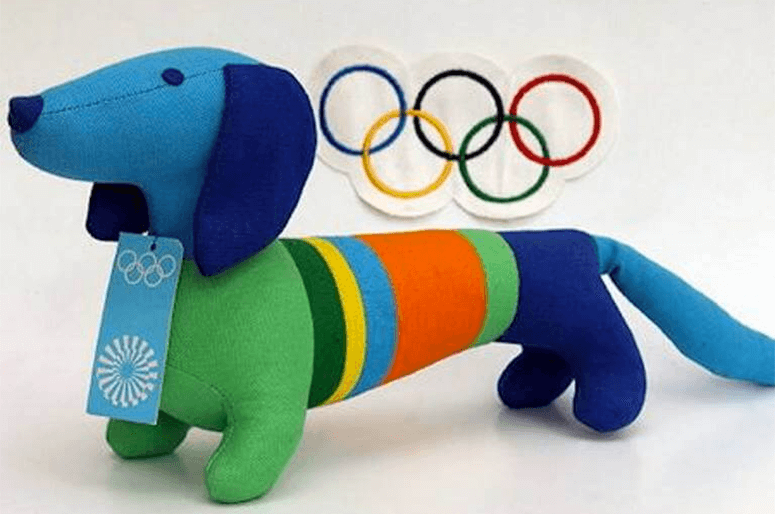
The goal was to make a windfall at the Olympics by selling handmade souvenirs from the Philippines. Every four years, the International Olympic Committee (IOC) licenses businessmen to manufacture the Olympic mascot which in 1972 was a cute Dachshund called Waldi. In exchange for 20 percent of sales, you could get licensed to make Waldi T-shirts, Waldi keychains, backpacks, fridge magnets, beer mugs. Yes, any conceivable kitsch!
Two weeks before the games opening, I arrived in Munich—with 25,000 Dachshunds made of capiz shells. I was the one-man marketing machine: 10 a.m. delivering Waldi boxes; midday negotiating with new retailers; 3 p.m. depositing cash in the bank. Being a DIY entrepreneur, I even dared to retail my dogs.
Spreading out my Ifugao blanket on the Olympic lawn, I displayed my capiz windchimes and hawked my exotic dogs to sports fans. At midnight, unsold items were loaded into my Sarao jeepney for a ride home. Dead-tired, I’d doze off, confident I was crossing my bridge towards artistic freedom
Flash-forward: an olympic Déjà Vu…
September 2024: Typhoon-Carina has just exited. The first sunbursts dry up Baguio’s market where I’m in a café relishing the headlines: “Caloy Yulo wins 2 Golds!—Philippine Anthem Played in the Paris Stadium.” Kilig-to-d-bones! Pinoy athletes, front-paged!
Hidden in the back pages is a slugfest—pitting A.I. drones vs innocent refugees (as if to spite the spirit of the peaceful sportsfest in Paris). The banner reads: “Palestine Kids in Soccer Field Killed by Israeli missile!” Yuckhhh! An ugly reminder that war games never sleep.
Why can’t multinational scores be settled in sporty style? Why not rules-based, one-on-one skirmishes? Like Filipina boxer Nesthy Petecio out-punching Chinese lightweight Yu Xichun in the ring. After the last bell, they embrace! 57kg weight limits are strict. No bullying. No water cannons. No laser flashings.
That graphic headline was a déjà vu for me, of a bloody tragedy 50 years ago in 1972 – the Munich Olympics massacre.
Flashback to the 1972 foxholes…
Midway into the 1972 Games, the Baguio street-hawker on the grassy lawns was making a windfall retailing windchimes at triple the wholesale price-tag. I had no cash register, but each dog-sale rang ecstatic in my ears, louder than the roar from the stadium behind me.
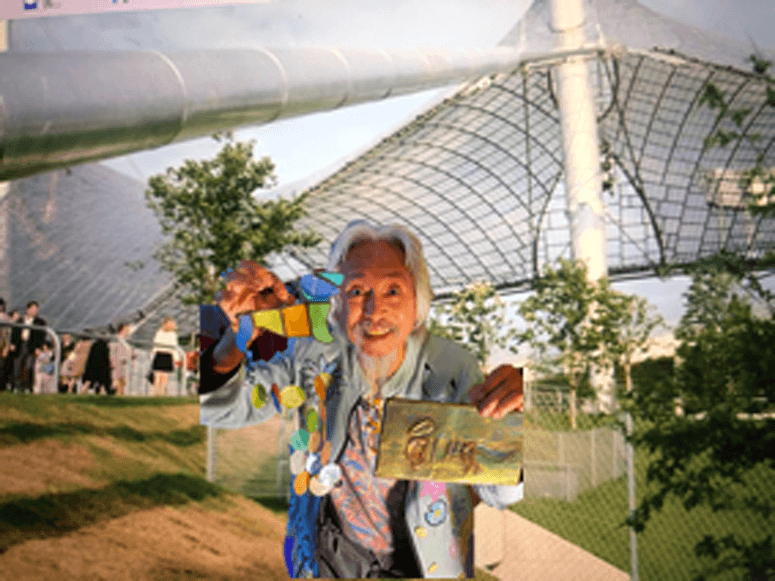
Day 10, my sales crossed the break-even point. Patok!!I had paid my last debts to families who had handcrafted the capiz dogs in their huts. Daily sales were remitted to Baguio by telegraphic-transfer (another dinosaur term in pre-smartphone online banking days). With every box of Waldi windchimes sold, I would soon celebrate at the upcoming Munich Oktoberfest. Prosit!
Cue: ‘Apocalypse Now’ choppers…
Sept. 5: I was convincing three German grandmas to buy organic Waldis “made of junge perlmutte” (young mother of pearl). A swarm of low-flying helicopters drowned my sales pitch. Chug-a-chug-chug! (Like Dolby soundtracks of Apocalypse Now doing a helicopter raid on a Vietnamese village.)
Minutes later, more choppers crisscrossing. We had no idea what was happening. They landed beside the athletes’ dormitories behind me on Connally Street where I had picked up my inventories that morning. How easily in/out of the Olympic Village I had carried cartons full of capiz.
As the 2024 Olympic flame ceremoniously flickered out in Paris, a nostalgia for the 1972 Munich Olympic Games is reignited in the heart of a National Artist. His Olympic Gold dream was doused — destined to reincarnate into a gold brick road toward artistic Liwanag.
Only the next day we learned it was the Olympic hostage crisis. The Middle East war had spilled over into the sports arena. The toll was 11 Israeli athletes dead, five terrorists and one Munich policeman.
Sept. 6. All events cancelled. Flags hoisted at half- mast. After 10 days of screaming crowds, the Olympic stadium became a ghost town. The IOC top brass convenes a crisis meeting: Cancel the bloody sportsfest? Or: The games must go on?
Goodbye to d Rainbow Games
Sept 7. The games resumed. Sports fans could use their pre-purchased tickets to events one day later. But a collective gloom had settled. Souvenir-hunting dwindled to a handful of Waldis sold.
Before the games, Munich police had been briefed to be inconspicuous—to create a “Cheerful Rainbow Olympiade” (This branding was to contrast with the 1936 Hitler Berlin Olympics.) But overnight, cops turned ironfisted, checking IDs of Olympic visitors. Street-hawkers were banned (almost Gestapo-like, I felt). Paranoia was viral. Bemedaled Mark Spitz, a Jewish-American athlete, took the next plane home.

Sept 11. The closing ceremonies in the stadium managed to look festive. 80,000 spectators in the bleachers waved their made-in-China rainbow flashlights. Down at the soccer-field, emotionally-charged athletes (minus the Israeli delegation) hugged each other farewell.
The Olympic flame snuffed out dramatically against the Munich night sky. The 17-day “Rainbow Games” spectacle was over. My scripted dream had been flighty: an Easy Rider flick—the hero riding off to an Olympic gold sunset. The unscripted ending instead had turned into a Perfumed Nightmare horror film!
Stuck on a bridge of no return
The Baguio sidewalk vendor, now totally bankrupt, was chained to 6,789 unsold dogs; 275 cartons of Waldis were now hostage in a Munich warehouse. With cash just enough for a week of groceries, I moved outside Munich and shared a low-rent farmhouse with a community of artists—painters, dancers, actors, film students, musicians. Plus an oddball: an ex-economist with a torn MBA diploma.
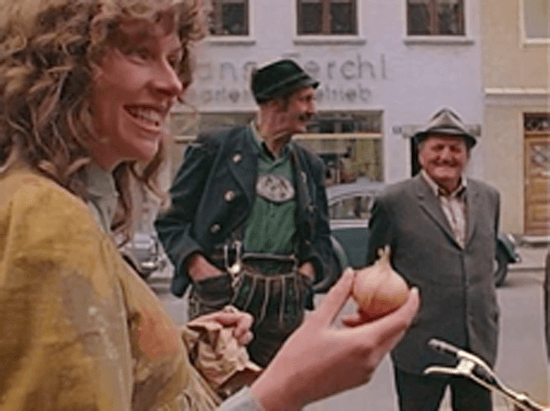
My career-shift was derailed. But living cheaply with a bunch of rebels, fired by an anti-consumerist fervor—this was my cosmic jumpstart. It was the perfect counterculture mirror to the consumption-driven mindset of a Wharton MBA. I was doomed to a changeover in worldview.
After all, the Waldi adventure had not been a super business-model, wherein the MBA had invested 101 percent of brain, brawn and soul towards a Holy Grail: 500 percent profit… or bust! The disaster did not leave me suicidal. It was just another life bridge I had tried to cross… and failed. When I ripped up my Wharton diploma, was it a one-way ticket to the blues?
Unpaved road called Tiw-Tiwong St.
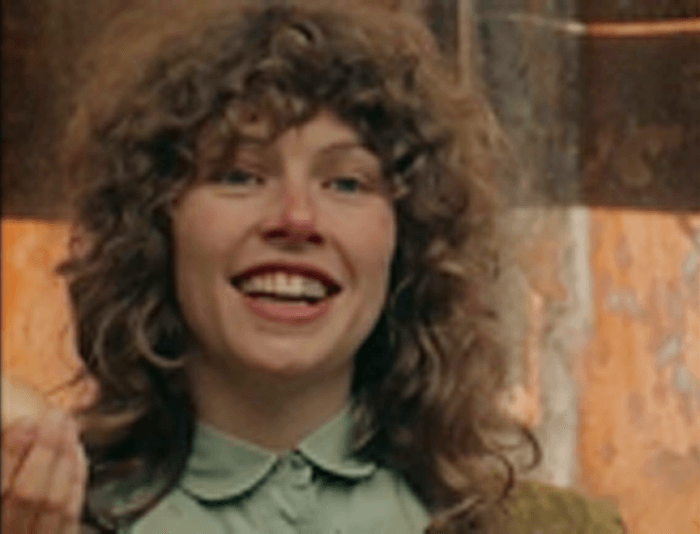
The Munich fiasco fated this wannabe artist to cross paths with a fine-arts student at the Munich Kunst Academie. Yes, Katrin and her friend hitched a ride in my Sarao jeepney, on the way to an Olympic art exhibit that was closing.
Initially, it was her stained-glass art that fascinated me. Later it was her harmony with Mother Gaia that captivated me. She had grown up at Ammersee Lake outside Munich. As a promdi who walked barefoot on the lakeside shore, Katrin’s nature-child framings grounded my restless soul. Sniffing crushed flowers, picking wooden flotsam debris for artworks, listening to birds chirping chismis—her simple joys tuned my inner frequencies to the world of kapwa nature.
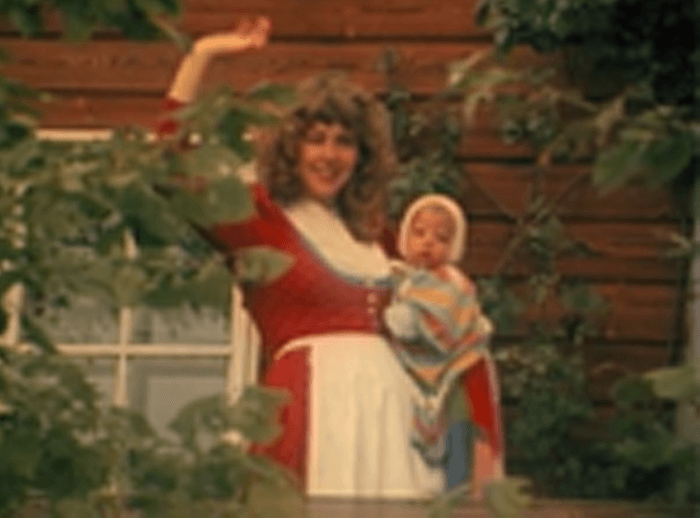
Cosmically, our jeepney sojourns did germinate into a German-Filipino kid (pun intended). Our 1975 firstborn, we named Kidlat Gottlieb Kalayaan. Was he the Olympic Gold I was destined to bring home?
We returned to Baguio in 1978 where we raised our hybrid-family, eventually to include Kawayan (1979) and Kabunyan (1982). Mindfully, we had avoided our sons growing up in the super hi-tech world of Germany. Spiritually we opted for the slower-paced childrearing of Pinoy kapwa kultur.
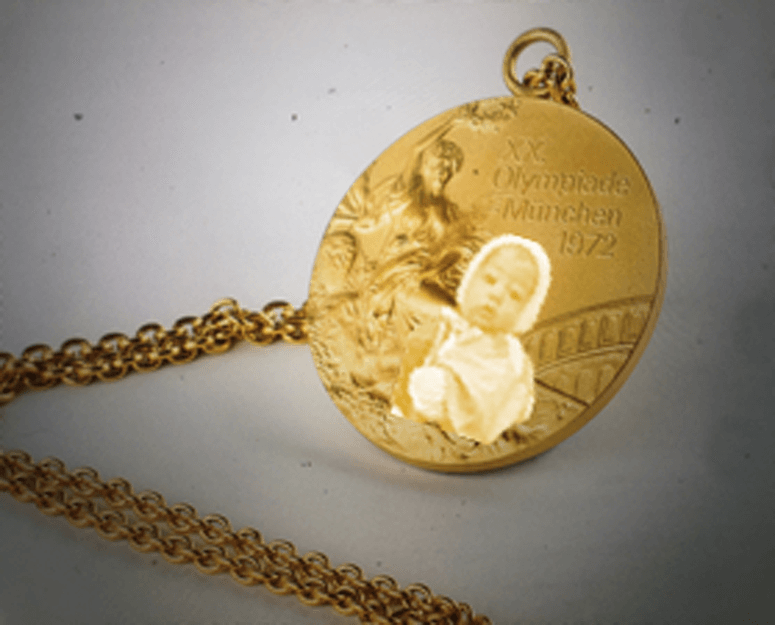
The Munich (mis)adventure had accelerated the mutation of this Waldi-exporter into a balik-sa-bayan artist. Returning to his native land of IndioGenius creatives, this wannabe artist adopted his son’s name Kidlat. T’was a symbolic rekindling. By becoming Kidlat Jr., his newfound creativity would always remind him of its fiery origins—in the embers of an Olympic nightmare.
Verily, it’s like that Ifugao word Tiw-Tiwong: The lost wandering spirit, in the end, finds its way home. The Olympic tragedy triggered a return to Baguio. The wayward eagle’s freefall was a balik-pugad roadmap—to the native Liwanag of his enlightened ancestors.
(EPILOGUE: When your endgame plummets to Ground ZERO, there is no other way to go! Nursing my Munich-shattered spirit, I would rewrite my narrative. Pray tell, kaibigan, forget that over-serious plotline. Bathala Na!)



